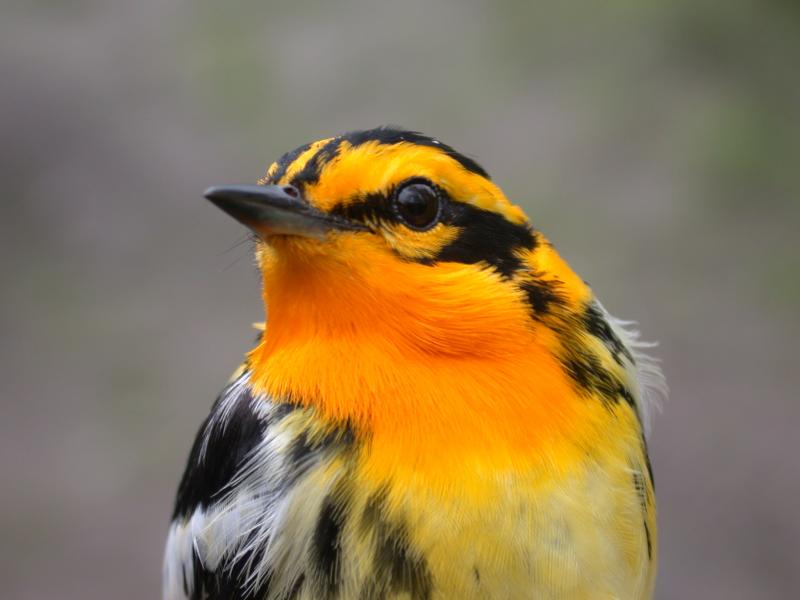The blackburnian warbler is a firestorm of a bird.
Smaller than a chickadee, it travels here each year from northern South America. The male’s throat is such a brilliant orange color that when you see it you think it can’t be real.
But seeing one can be a challenge. That’s because they love to stay high up in the very top of tall spruce trees. Add to that the fact that their song (often the only way to detect their presence) is so high that many people can’t even hear it.
We have powerful memories of the time that we watched one of these eye-popping gems hopping at our feet on a mat of dark rockweed on Monhegan Island.
Experiences like this are not uncommon on Monhegan. That’s one reason why the island is one of our personal favorite birding spots and a rather famous and popular birding spot for birders from across the United States.
The island is approximately 10 miles off the coast and its range of habitats includes extensive forest cover, which makes the island attractive to an amazing diversity and abundance of migrant birds. At the height of migration in May and again in September, it’s quite easy to tally more than a hundred species in a day of strolling around the island’s trails and dirt roads.
Especially enticing to many birders is the always-open possibility of finding something rare – a species that shouldn’t be in Maine.
One of our favorite Monhegan memories comes from many years ago when, soon after arriving, we were relaxing in our rented efficiency apartment, just as a large, elegant gleaming white bird with a long forked tail glided past our window.
The bird, a swallow-tailed kite, doesn’t normally occur closer than South Carolina. We had never seen one before. In fact, it was the first time a swallow-tailed kite had ever been found in Maine. Many birders enjoyed its presence for the few days it stayed on Monhegan.
Even when there are no rarities to be seen, the island is often engulfed in surprising numbers of birds. Sights like a resplendent blossoming apple tree with a half-dozen brilliant orange Baltimore orioles, or a dazzling blue indigo bunting and a rose-breasted grosbeak in view at once are regular sights on Monhegan.
One reason the island attracts so many birds is that it is a place for those migrating to rest. At dawn, many small birds that have been migrating all night discover they are over the ocean rather than over land, where they could stop, feed and spend the day.
If a bird could feel a sense of relief, then the sight of Monhegan in the breaking dawn must certainly provide that sense to tens of thousands of birds every year.
Although schedules vary, boat trips out to Monhegan depart from Boothbay Harbor, New Harbor and Port Clyde. If a day trip is too short for your liking, there are various kinds of lodging on the island but reservations are generally mandatory.
Dr. Jeff Wells is the senior scientist for the Boreal Songbird Initiative. During his time at the famed Cornell Lab of Ornithology and as the Audubon Society's national bird conservation director, Dr. Wells earned a reputation as one of the nation's leading bird experts and conservation biologists. Jeff's grandfather, the late John Chase, was a columnist for the Boothbay Register for many years. Allison Childs Wells, also formerly of the Cornell Lab of Ornithology, is a widely published natural history writer and a senior director at the Natural Resources Council of Maine. Together, they have been writing and teaching people about birds for decades. The Maine natives are authors of the highly acclaimed book, “Maine's Favorite Birds.”




























